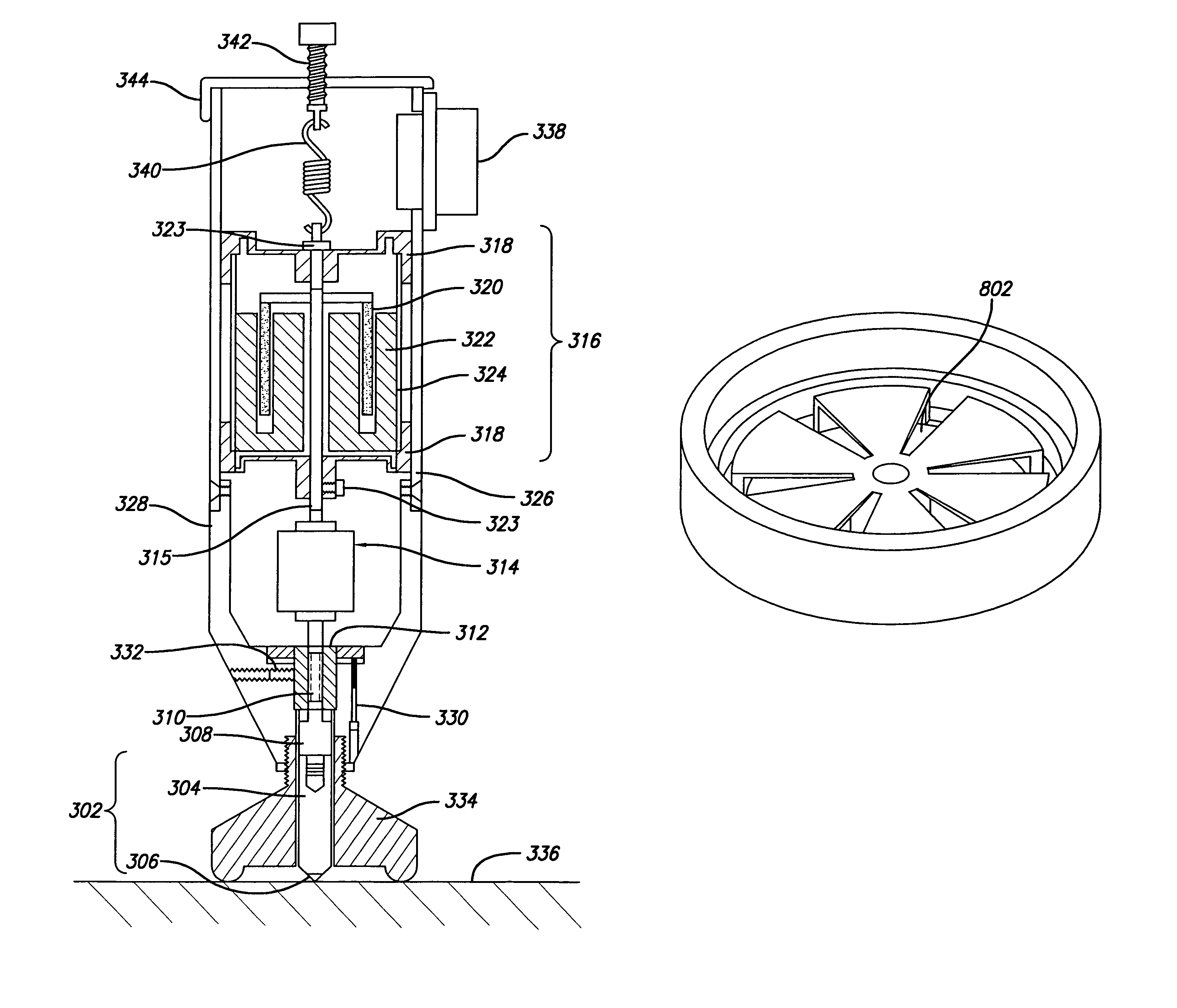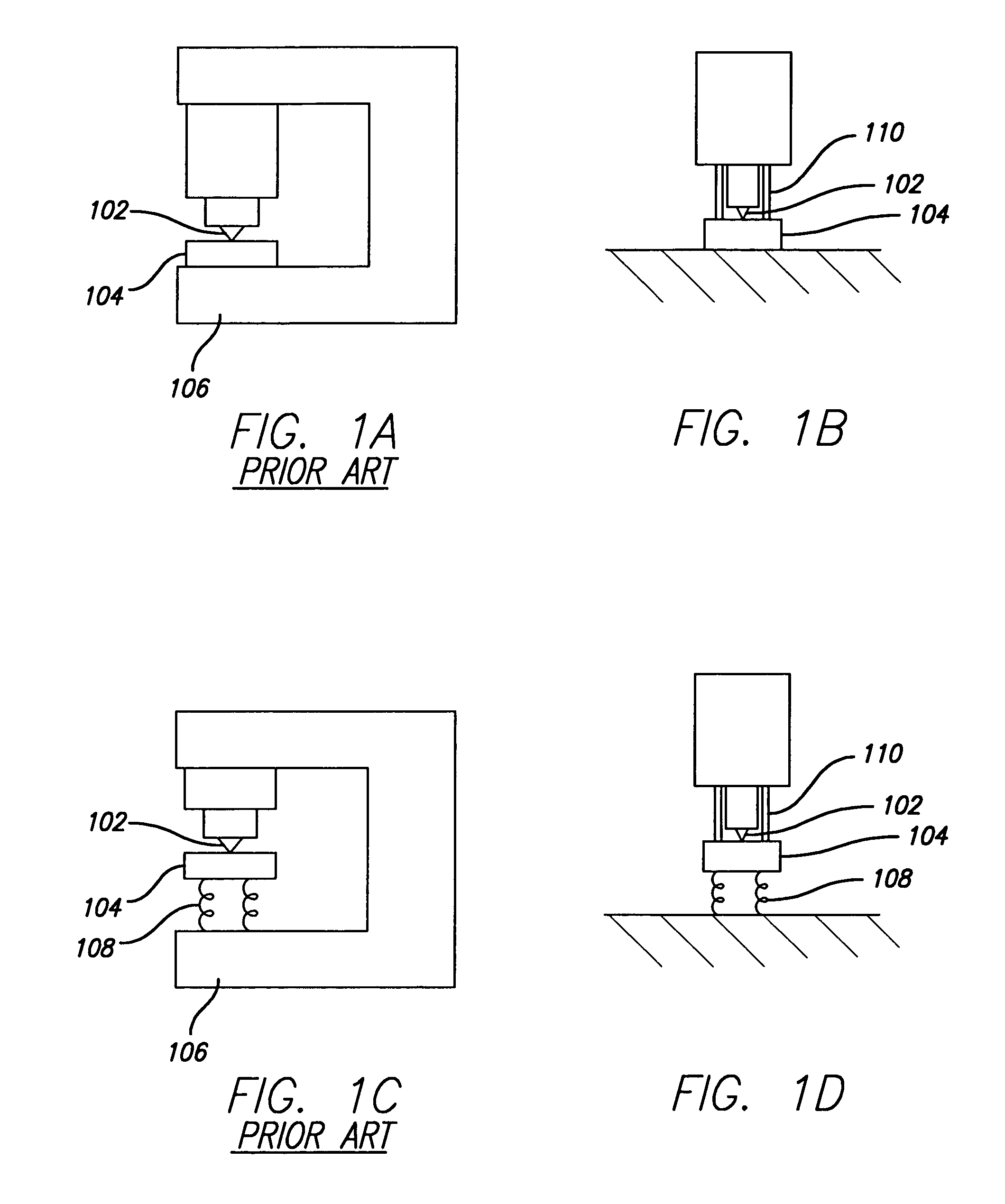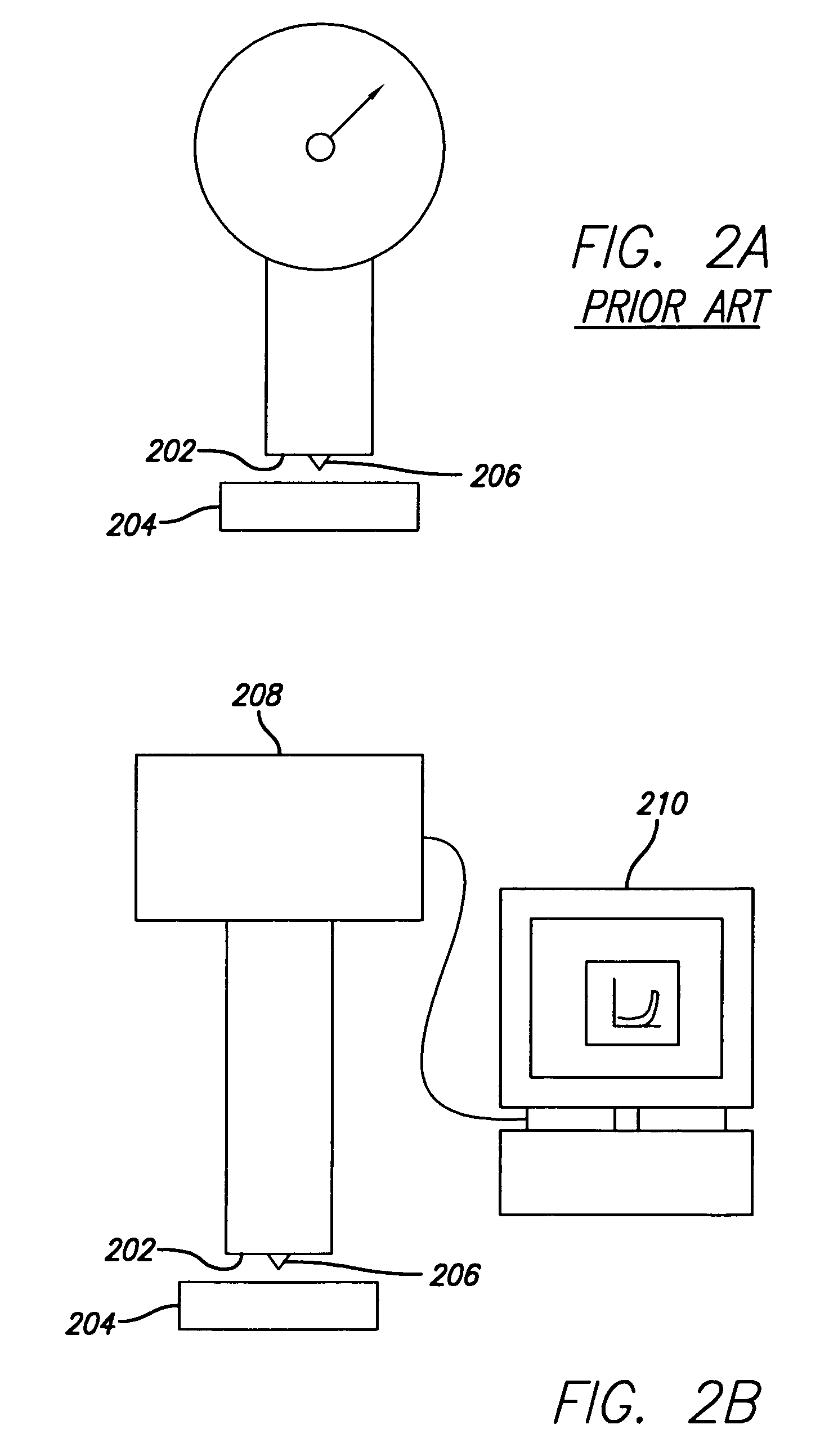Methods and instruments for materials testing
a material and apparatus technology, applied in the field of apparatus and methods for materials testing, can solve the problems of inability to correct time-dependent effects, inability to accurately measure material properties beyond just hardness, and inability to carry a portable tester, so as to increase the capability of durometer and increase the ability to test samples
- Summary
- Abstract
- Description
- Claims
- Application Information
AI Technical Summary
Benefits of technology
Problems solved by technology
Method used
Image
Examples
Embodiment Construction
[0047]The essential feature of the invention is a probe that is inserted into a material under test a distance that is measured relative to a reference probe, which rests substantially on the surface of the material under test. In a preferred embodiment, the probe consists of a steel shaft tipped with a sharpened diamond. It slips inside a three footed reference probe with feet on a circle of diameter approximately 1.5 inches. A typical penetration depth is 0.05 mm.
[0048]The method is particularly suited to evaluating one or more properties of a living human bone of a subject, the test probe being inserted through the periosteum and / or soft tissue on the bone so that the test probe contacts the subject's bone. Such an evaluation is described in our previous work on developing a bone diagnostic Instrument, filed in U.S. patent application Ser. No. 11 / 417,494 filed May 3, 2006 titled Methods and Instruments for Assessing Bone Fracture Risk, the disclosure of which is incorporated here...
PUM
| Property | Measurement | Unit |
|---|---|---|
| diameter | aaaaa | aaaaa |
| penetration depth | aaaaa | aaaaa |
| currents | aaaaa | aaaaa |
Abstract
Description
Claims
Application Information
 Login to View More
Login to View More - R&D
- Intellectual Property
- Life Sciences
- Materials
- Tech Scout
- Unparalleled Data Quality
- Higher Quality Content
- 60% Fewer Hallucinations
Browse by: Latest US Patents, China's latest patents, Technical Efficacy Thesaurus, Application Domain, Technology Topic, Popular Technical Reports.
© 2025 PatSnap. All rights reserved.Legal|Privacy policy|Modern Slavery Act Transparency Statement|Sitemap|About US| Contact US: help@patsnap.com



